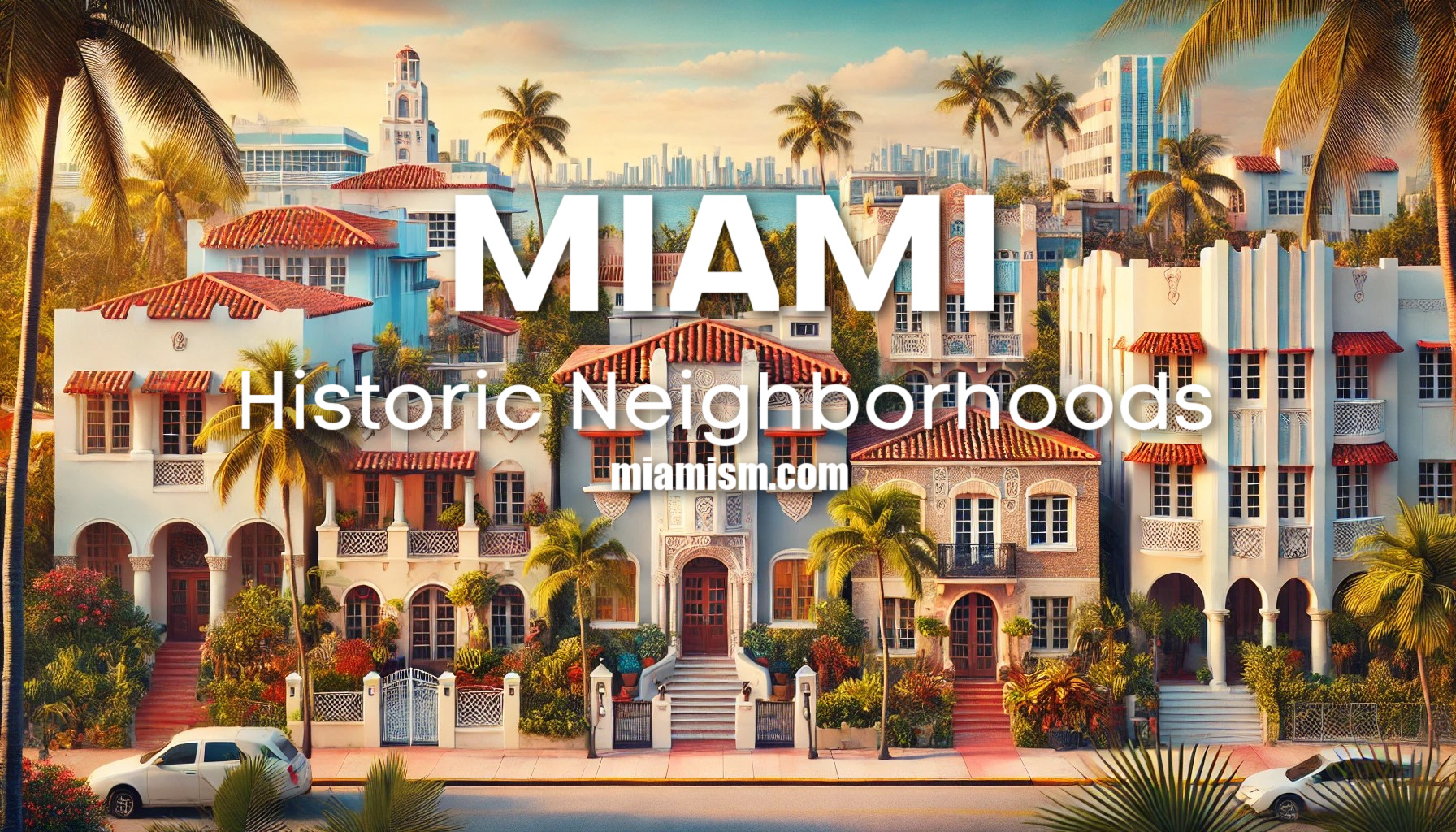
Discover Miami’s Historic Neighborhoods: The Pioneers of Urban Expansion
Did you know that Miami’s beloved historic neighborhoods were the trendsetters of the 1920s, laying the groundwork for what would become the city’s expansive urban landscape? These areas were the original developments that sprouted amidst vast tracts of undeveloped land, effectively setting the stage for Miami’s rapid growth. As the city’s popularity skyrocketed, these neighborhoods served as the foundational blueprints from which the rest of Miami burgeoned.
It’s interesting to note the similarities in architectural styles in each one of these, especially since they were not developed by same companies and were quite separated one from the other.
Let’s explore these vibrant districts that not only hold the keys to the city’s past but also pioneered its transformation into the bustling metropolis we know today.
Coral Gables
Take a stroll through Coral Gables, known to many simply as “The City Beautiful”—a name that’s as true now as it was back in the day. This place was the dream project of George Merrick, who wanted to create a neighborhood that felt like a slice of the Mediterranean right here in Florida. He picked the Mediterranean Revival style for its classic stucco walls, red tile roofs, and fancy arches that remind you of a vacation in Spain or Italy. Merrick brought in some big-name architects like Phineas Paist and Denman Fink to make sure every avenue and building was just right. Today, Coral Gables isn’t just a neighborhood; it’s a living showcase of lush streets and gorgeous buildings that mix the old with the new beautifully. And I must add that its “historic preservation” is the best in South Florida…something for the rest of the neighborhoods to envy.
Miami Shores
Welcome to Miami Shores, lovingly referred to as “The Village Beautiful.” Developed in the early 1920s by the Shoreland Company, this place was meant to be the ultimate suburb—beautiful homes, wide streets, and plenty of green space. The architectural talents behind the scene, like Robert Law Weed and the duo Kiehnel and Elliott, introduced a Mediterranean Revival style that really captured the area’s lush, tropical vibe with stucco finishes, barrel tile roofs, and elegant archways. While Miami Shores has retained much of its historic charm, it’s important to note that new development has led to the loss of some historic homes, a reminder of the ongoing challenge in balancing growth with preservation. Here at Miamism, we’re all about celebrating the old while welcoming the new, always with an eye on protecting the heritage that makes this community unique.
Miami Beach
Have you ever wondered what gives Miami Beach its iconic flair? In the 1920s, visionary developer Carl G. Fisher decided to transform this spot into the ultimate glamorous getaway, creating a place where people could escape the cold northern winters in style. Fisher’s dream laid the foundation for what Miami Beach is known today as “Where Sun and Style Meet the Sea.”
Enter L. Murray Dixon, one of the key architects who brought Fisher’s vision to life. Dixon’s work is all over Miami Beach, from The Victor Hotel to The Tides South Beach, and let’s not forget The Raleigh. His designs are the epitome of Art Deco elegance, featuring smooth lines, geometric accents, and those vibrant colors that just scream Miami.
So next time you’re admiring the classic beauty along Ocean Drive, remember it’s thanks to Fisher’s pioneering spirit and Dixon’s architectural genius that Miami Beach became the stunning art deco paradise we love today.
Morningside
Ever heard of Morningside, originally known as Bay Shore? It’s a little slice of Miami history developed in the 1920s by the Shoreland Company. What sets Morningside apart? Its prime focus on luxury and privacy, with streets that gracefully wind down to the stunning views of Biscayne Bay, offering a truly exclusive retreat from the bustling city life.
Unlike Miami Shores, which was designed to be a full-service community with all sorts of amenities, Morningside was crafted as a purely residential area. Here, the Mediterranean Revival architecture really stands out—thanks to the genius of architects like Kiehnel and Elliott. This style brings elegant facades and lush, tropical landscaping together in a way that complements its peaceful surroundings. As Miami’s first historic district, Morningside is committed to preserving this tranquil, opulent vibe, making it a unique and cherished part of Miami’s architectural heritage.
Miami Springs
Miami Springs has a unique backstory that sets it apart from other Miami neighborhoods. Created in the 1920s by aviation pioneer Glenn Curtiss, this area was designed to reflect the Pueblo Revival architectural style, which is quite the rarity in Florida. Think adobe-like stucco walls, earthy color palettes, and clay tile roofs—elements that give Miami Springs a distinctive Southwest flair right in the heart of South Florida.
Unlike the bustling urban vibes of downtown Miami, Miami Springs maintains a relaxed, small-town atmosphere, cherished for its tightly-knit community and historical roots. The architectural planning was largely influenced by James Bright and Glenn Curtiss themselves, who were more about the visionary layout of the city than specific building designs. This focus has helped preserve the neighborhood’s original character, making Miami Springs not just a place to live but a living slice of Miami’s pioneering past.
